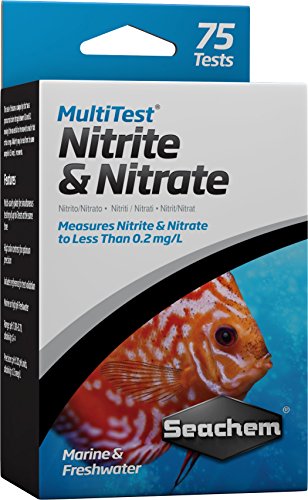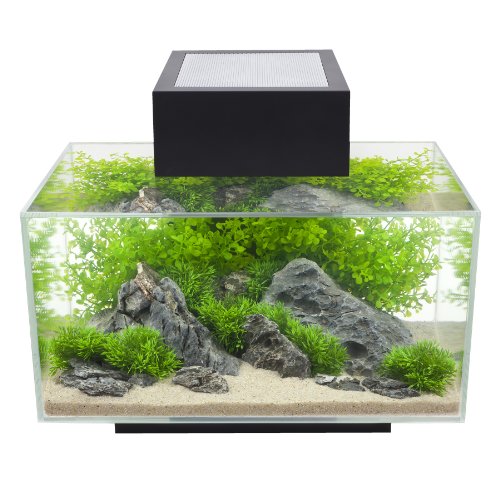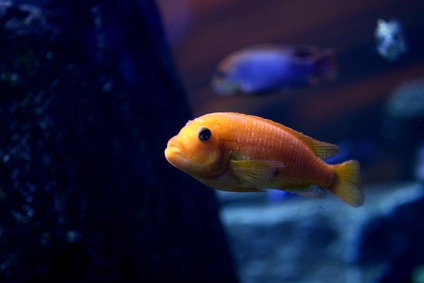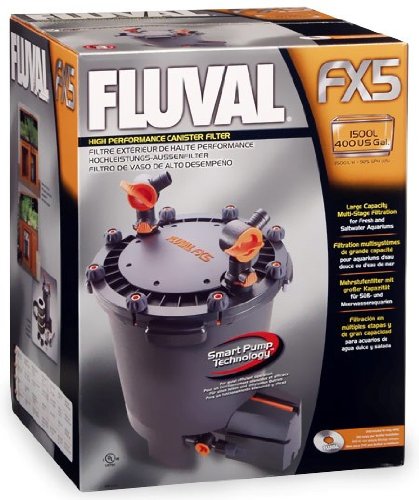
The nitrogen cycle is an important factor that determines the health of a pond, fish aquarium or water environment where fish live. Understanding this process is helpful to maintaining a healthy aquarium.

The Aquarium Nitrogen Cycle
The nitrogen cycle is the amount of food fish eat or don’t eat, the waste fish produce, plants, bacteria, nitrites and nitrates. These are all interrelated and dependant on each other. This process is called cycling and doesn’t start immediately, but starts after fish, plants, food and bacteria have been introduced into the aquarium for a few weeks. Fish and plants will thrive if the aquarium is properly maintained.
Water Quality
It is a good idea to check water quality occasionally, and especially if the aquarium is having problems. The tests are inexpensive and give readings to indicate if the ammonia, nitrites and nitrates in the water are harmful. Tests can also check pH and hardness.
Water Changes
Water changes are necessary, and are the easiest way to remove toxic compounds from the water and dilute them by removing old and adding fresh water. Some fish, such as discus, require small frequent water changes. Their tankmates, such as angelfish and other cichlids, also benefit from water changes. It is better when doing water changes to do small weekly changes rather than large infrequent water changes. For fish like discus that require frequent changes, ten percent a week is good. With hardier fish, a twenty or twenty-five percent change every two weeks is good.
Fish, Food and Waste
Overfeeding fish is one of the basic rules beginning aquarists should learn not to do. Uneaten food falls to the bottom of the tank, and if uneaten, decomposes. Excess food and fish waste and urea cause ammonia and nitrites.
Ammonia
Ammonia is toxic to fish, and produced by waste food from overfeeding and fish waste. Bacteria feed and decompose the ammonia, but water changes are still necessary to prevent further ammonia buildup by diluting the chemical.
Nitrite
Nitrite is another toxic chemical to fish. Helpful bacteria will feed on this also, and convert it to nitrates. Water changes also dilute this harmful chemical.
Nitrate
Nitrates are further decomposed by bacteria and will nourish plants. Nitrates are relatively harmless to fish and the end result of the ammonia process.
Bacteria
Bacteria provide biological filtration for the aquarium. Beneficial bacteria will grow on every aquarium surface to decompose the ammonia and nitrites into more harmless nitrates. With a new aquarium set up it takes a few weeks for the tank to cycle and get bacteria colonies started.
The more oxygen available to a bacteria colony, the more toxins it eats. Bio-wheel filters are a new idea for hang on the back (HOB) filters. Bio-wheel manufactures advertise they promote biological filtration better because they provide more oxygen to the tank. The bio-wheel is made of a material conducive to supporting bacteria and water running over the wheel to provide more oxygen. Other HOB filters use a foam filter that water runs through. The foam pockets provide spaces for bacteria to grow and water running through them provides oxygen. Aquarists that have preformed tests see no difference in tank performance between the two filters. The bio-wheel filters are good filters, but may, or may not be superior to a standard HOB filter.
 How to Take Care of The Baby Betta Fish
How to Take Care of The Baby Betta Fish
How to Take Care of The Baby Betta Fish
How to Take Care of The Baby Betta Fish
 How to Reduce Nitrates in Fish Tank
You can always can find some nitrates in a typ
How to Reduce Nitrates in Fish Tank
You can always can find some nitrates in a typ
 Setting Up a Saltwater Aquarium
A saltwater aquarium is a lo
Setting Up a Saltwater Aquarium
A saltwater aquarium is a lo
 How to Take Care of a Baby Parrot Fish
How to Take Care of a Baby Parrot Fish
How to Take Care of a Baby Parrot Fish
How to Take Care of a Baby Parrot Fish
 Fluval Aquarium Filters
Fluval Fish Tank Filters for Your AquariumIn t
Fluval Aquarium Filters
Fluval Fish Tank Filters for Your AquariumIn t
Copyright © 2005-2016 Pet Information All Rights Reserved
Contact us: www162date@outlook.com